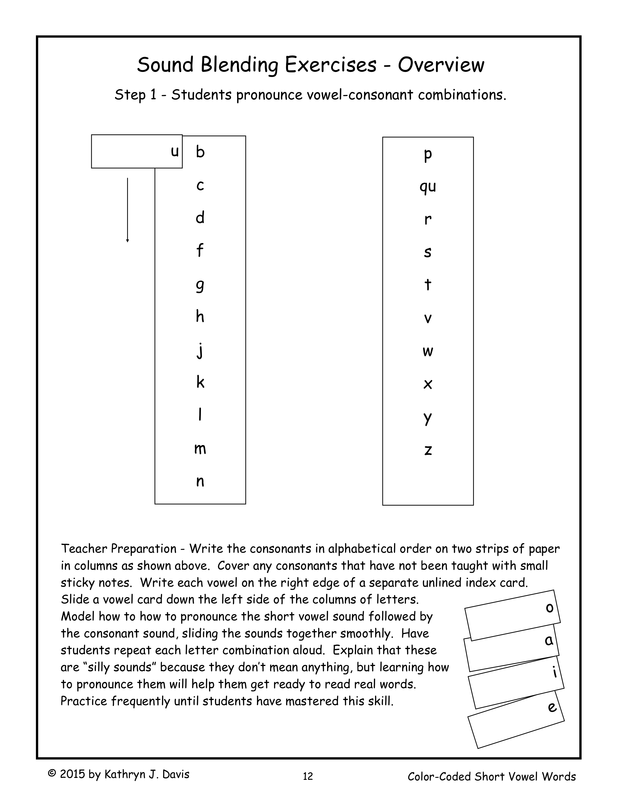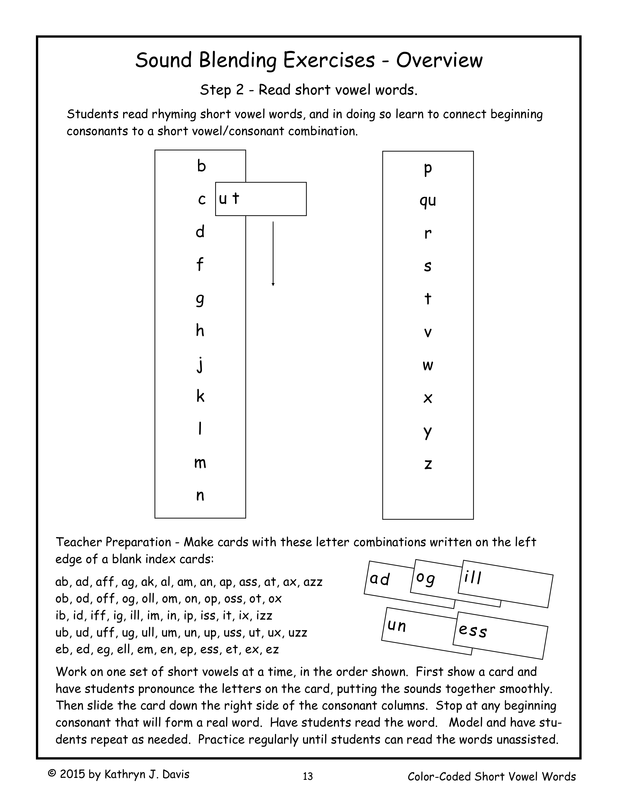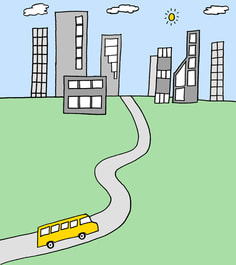Sound city Reading Blog |
|
10/9/2017 I've Uploaded A Smaller Version Of The Letter Connections Activity Used To Teach "Sound Blending"Read Now These instructions in the book Color-Coded Short Vowel Words explain how to make letter connections materials to teach sound blending. However, both a large and small version of these materials are available as pdf files to download from this web site. The two versions of the Letter Connections Activity can be found on the PDF Files page for sound cards, sounds charts, etc. The larger version has been available for a while. It is large enough to use with a whole class, displayed on a large easel or on a chalkboard. I uploaded a smaller version today. It is a good size to use when working with a single student or a small group. For one student it can be used on a flat surface such as a desk or table. For a small group, it can be used on a tabletop easel. These charts are used to teach "sound blending," the ability to connect a series of letter sounds smoothly when pronouncing them.
The Problem Often, students are able to say the sounds for the letters of the alphabet, put alphabet letters together to form words, and read words by saying the sound for each letter. They understand that letters are symbols for sounds and know that the letters are arranged sequentially in words to show us how to pronounce those words. However, they are still reading each word by saying one letter sound at a time, pausing between the sounds. While they can mentally put the sounds together after they have pronounced them separately, they are not yet able to read fluently because the decoding process slows them down quite a bit. The Solution The Letter Connections Activity teaches students to pronounce two or more letters, one after another, putting the sounds together smoothly. Step One: Working With Two Sounds Students begin by pronouncing short vowel-consonant combinations, such as ab, ac, ad, af, ag, and am. This exercise helps students learn to slide two letter sounds together smoothly. For beginners, this can be a challenge but it is much easier than trying to put three sounds together smoothly to pronounce a whole word. As students pronounce these vowel-consonant combinations, they are also learning that single vowels followed by a consonant usually represent the short vowel sound. Most of these two-sound combinations are not real words, so in this program they are called "silly sounds." Often, when students are having trouble pronouncing three-sound short vowel words smoothly, they will also have trouble putting just two sounds together. This activity teaches them how to do that. Step Two: Working With Three Sounds To Read Short Vowel Words After the first step has been mastered, students can begin reading series of short vowel words formed by moving cards showing the same ending chunks they have already mastered (_at, _oss, _in, _ell, _un, etc.) down a column of beginning consonants. Students add various beginning sounds to the ending chunks to pronounce either real words or nonsense words. For example, using the ending chunk _at, students would read bat, cat, dat, fat, gat, hat, etc. Even though not all of the letter combinations are real words, many of the non-word combinations will be beginning syllables from multi-syllable words that students will eventually learn to read. Because students are only having to change the beginning letter sound as the ending chunk is moved from one letter to the next, they will find it easier to pronounce the three-letter combinations smoothly, without having to say the sounds separately. If you prefer to work with only real words with the students, you can just skip any combinations that don't form words. Step Three: Working With Advanced Letter Connections Charts After mastering short vowel words, students will learn to read words with beginning and ending consonant blends and words with various long vowel and r-controlled vowel patterns. As they learn new consonant and vowel patterns, the teacher can use the various advanced letter connections charts to give students practice pronouncing consonant-vowel and vowel-consonant combinations. Again, these combinations are often not real words, but they are generally found in words that students will be learning to read. For example, students might practice putting beginning consonants with long vowel patterns, as in bai, cai, dai, fai, gai, hai. They can also practice pronouncing words or chunks with ending consonant blends, for example band, cand, dand, fand, gand, and hand, or with beginning consonant blends, as in stee, snee, smee, and spee. (Spell check is NOT happy with these pseudo words!) Notice that studying these non-word syllables will prepare students to read many multi-syllable words such as daily, Haiti, candy, gander, steeple, and speedy. Reinforcing With Color-Coded Short Vowel Lists and Color-Coded Phonetic Lists These two books contain both rhyming and body-coda (same beginning sounds) word lists, sorted by vowel patterns. They would provide excellent follow up reinforcement after students have done particular letter connections activities. Students can practice reading words with the same consonant and vowel patterns they have studied on the charts. Individualizing Instruction Some students pick up decoding more quickly than others. It's important to provide enough decoding practice for students who find it more difficult. Often students who struggle initially go on to become excellent readers, after mastering sound blending, which is an important sub-skill for decoding. Developing this skill allows students to begin reading more fluently. Working with specific letter combinations helps students begin to decode words more smoothly and automatically. At the same time they are able to study a lot of new words in a short period of time. This allows students to read on their own with more confidence and better comprehension. In my experience working with first grade students, even those students who come into first grade already reading will benefit from this specific type of decoding instruction. It helps them become more conscious of the various letter patterns so that they can apply them when they begin to read more advanced words. I've seen many good readers become advanced readers who are reading above grade level by the end of the year. Some students who begin reading without any problems have particular difficulty with spelling. These students benefit greatly from this type of instruction because they are able to apply the patterns they have studied when spelling words. Comments are closed.
|




 RSS Feed
RSS Feed
